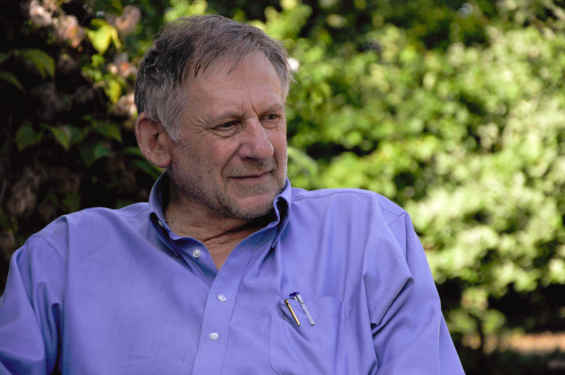No ‘I’ in design
Mike Alty
After leaving behind the little green sanctuary we’d nurtured in our terrace back yard, buzzing with life and edible treats, the slightly bigger garden in our new house, with earth instead of paving slabs beneath our feet, had me bamboozled.
Confronted with a blank canvas of concrete and limited space in our previous place, the reduced set of options made things much easier to work out. It didn’t take too many scribbles or much permaculture proficiency to realise there was roughly only one place most things should and could go.
Now stood, brew in hand, in the West Yorkshire mist, I was faced with long-standing resident perennials staring back at me disapprovingly from all angles, a lawn concerned for its life, and the odd tree and shrub breaking out into a sweat when I got my axe out. Many times over this last year I’ve felt continually at a loss as to where to begin - scared to desecrate what is already a beautifully wild space.
Frantically flipping through the pages of every ‘forest garden in your backyard’ book I could get my hands on, delving into Martin Crawford’s catalogues, and swatting up on obscure edible perennials has not been enough to solve the riddle. After a year of observations, scribbles, diary entries, soil tests and the occasional impatient plant purchase in the spring, I finally hit the wall planning my forager’s paradise, surrounded by a sea of cut out circles - the colourful jigsaw pieces that were meant to bring it all together.
Enter the late Christopher Alexander and his vital book, ‘A Timeless Way of Building’. A brilliant architect and writer who has, through a series of books and volumes, documented his life-affirming, pattern-orientated approach to creating living spaces and buildings. To create places, and importantly, ones which are alive, we must imbue them with ‘the quality without a name’. Not the most useful starting point, I know. But let me explain.
 |
| Christopher Alexander |
 |
| “Just as a flower cannot be made, but only generated from the seed…anything which lives can only be achieved as the end product of a process, whose force takes over and replaces the wilful act of creation.” |
Following Christopher Alexander’s approach, it turned out ‘I’ was the problem. I needed to get out of the way and not attempt to ‘design’ anything. Instead, I was to be the guardian of its unfolding, free of the graph paper, scribbling and counting. Instead, I simply allow the ‘design’ to emerge of its own accord.
Working through the book, there are so many things which chime with the permaculture design process: sensitivity to place, defining of functions, balancing of forces, self-sufficiency, among many others. But in spite of these, I’d still become unstuck. The real breakthrough came through his idea of ‘pattern languages’; something that has helped me to develop and expand the ‘patterns to details’ principle and added a more soulful streak to what can sometimes feel like a very engineered and pragmatic design process.
| “We must understand that every place is given its character by certain patterns of events that keep on happening there...always interlocked with certain geometric patterns in space…the more living patterns there are in a place…the more it glows, the more it has that self-maintaining fire…then it becomes part of nature.” |
This is what I was after for the garden.
To achieve it, I need only create and use a pattern language, something Alexander says we all have the innate power to do. Indeed, we were all doing it perfectly well before modernity convinced us that only ‘experts’ should design everything for us. Just like using the words of our language to create an infinite variety of sentences, a pattern language gives the person using it the power to create an infinite variety of living spaces.
Armed with this new insight, memories of my previous scribblings and a brew to wander back out in the garden with, I vividly imagined the pattern language I’d considered. Each time, the individual patterns changed what I thought about the whole garden, affecting other patterns in the process. Unconstrained and fluid, I could update my mental designs in an instant, no need to redraw it all out.
| “It is not a process of addition, in which performed parts are combined to create a whole, but a process of unfolding, like the evolution of an embryo, in which the whole precedes the parts, and actually gives birth to them.” |
And so, in the end, I was back to the blank canvas of the terrace yard, where things and locations picked themselves. Finally, I had got out of the way, the process had taken over and as Alexander has promised, the design for the garden, naturally and slowly, came into being through the mist.
| “It is a process which brings order out of nothing but ourselves; it cannot be attained, but it will happen of its own accord, if we will only let it”. |
Note: I must mention that I’ve done little justice to the depth of thought and richness of Alexander’s theory and approach. If you’d like to enter the pattern language rabbit hole, I would highly recommend the multiple volumes and books he produced during his life, starting of course with The Timeless Way of Building.